Lecture 11 Climate Policy Responses
November 18, 2024
Sample analytic questions
- What are the rationale under the evolution of climate discussion and negotiation?
- What are the typic/classic policy instruments to address climate change?
- What are the pros and cons of those instruments?
- What further reserach is needed to show the cost-effectiveness of those instruments?
Update from COP29
A UN/global Carbon Market?
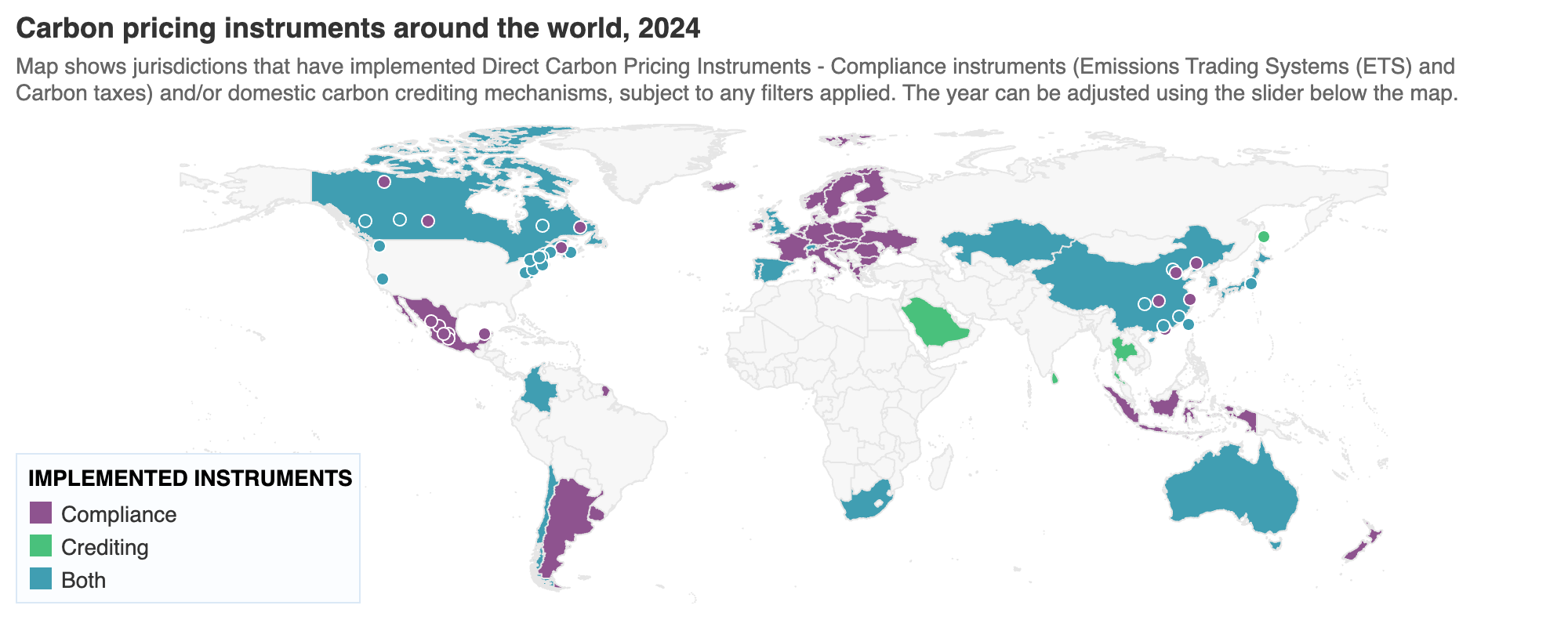
Source: World Bank Carbon Pricing Dashboard, Article 6.4 mechanism
Climate negotiation: a brief history
- 1997 Kyoto Protocol
- Common but Differentiated Responsibilities
- Common but Differentiated Responsibilities
- 2015 Paris Agreement
- 2 \(^\circ\)C /1.5 \(^\circ\)C
- NDC
- 2025: COP30
Source: UNFCCC
Understanding the drivers
- Carrot
- Stick
- Beyond “Carrot and Stick”
IPAT
\(I(mpact) = P(opulation) \times A(ffluence) \times T(echnology)\)
\(I(mpact) = \frac{P(opulation) \times A(ffluence)}{T(echnology)}\)
- Technology: renewable energy, energy efficiency, innovations
Source: Ehrlich and Holdren (1971)
Kaya identify
\(F=P \times \frac{G}{P} \times \frac{E}{G} \times \frac{F}{E}\)
Where:
- F: global CO2 emissions from human sources
- P: global population
- G: world GDP
- E: global energy consumption
And:
- G/P: GDP per capita
- E/G: energy intensity of the GDP
- F/E: emission intensity of energy
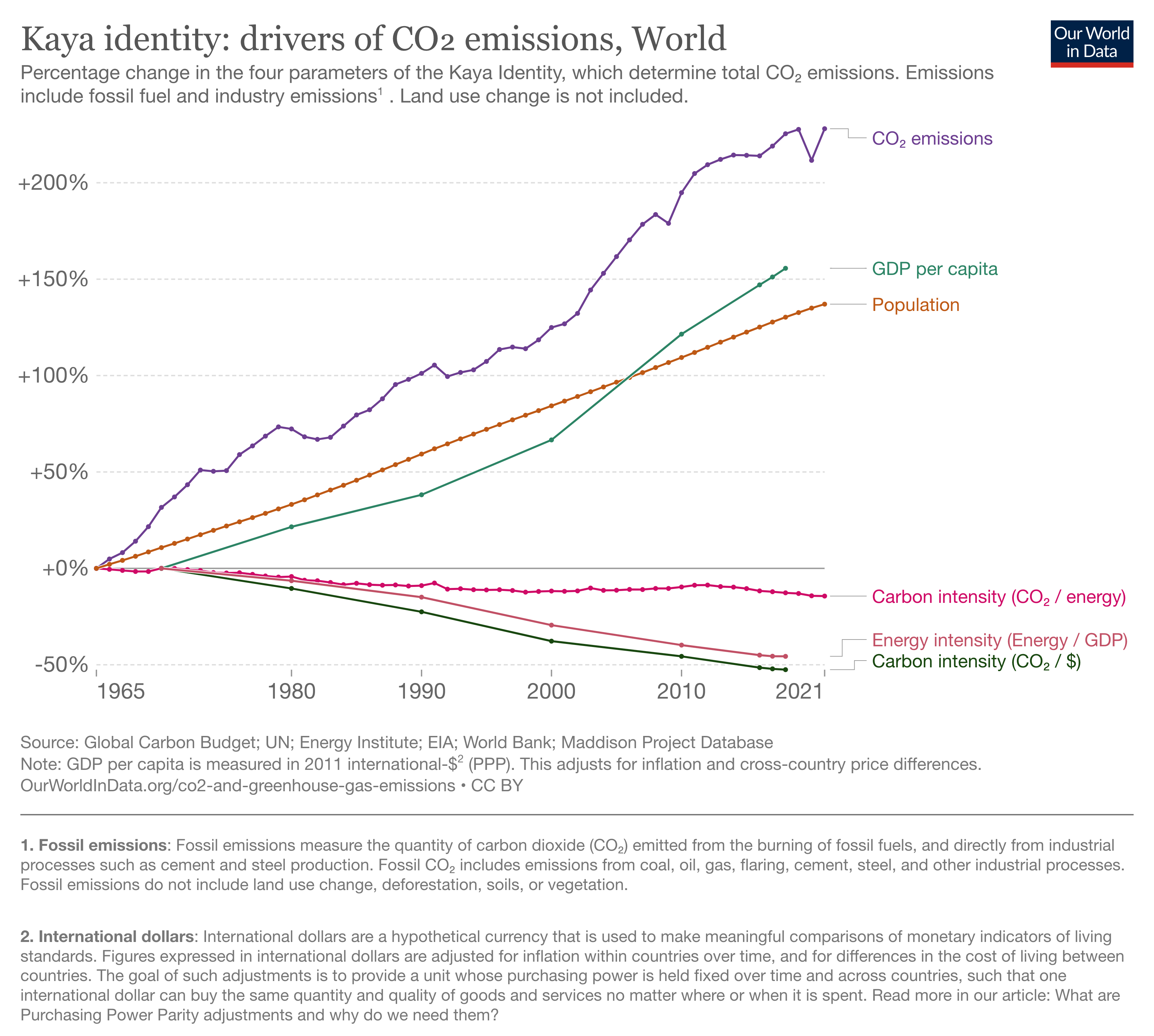
Source: Kaya and Yokobori (1997), Kaya Identity: drivers of CO₂ emissions in the World
Climate wedges
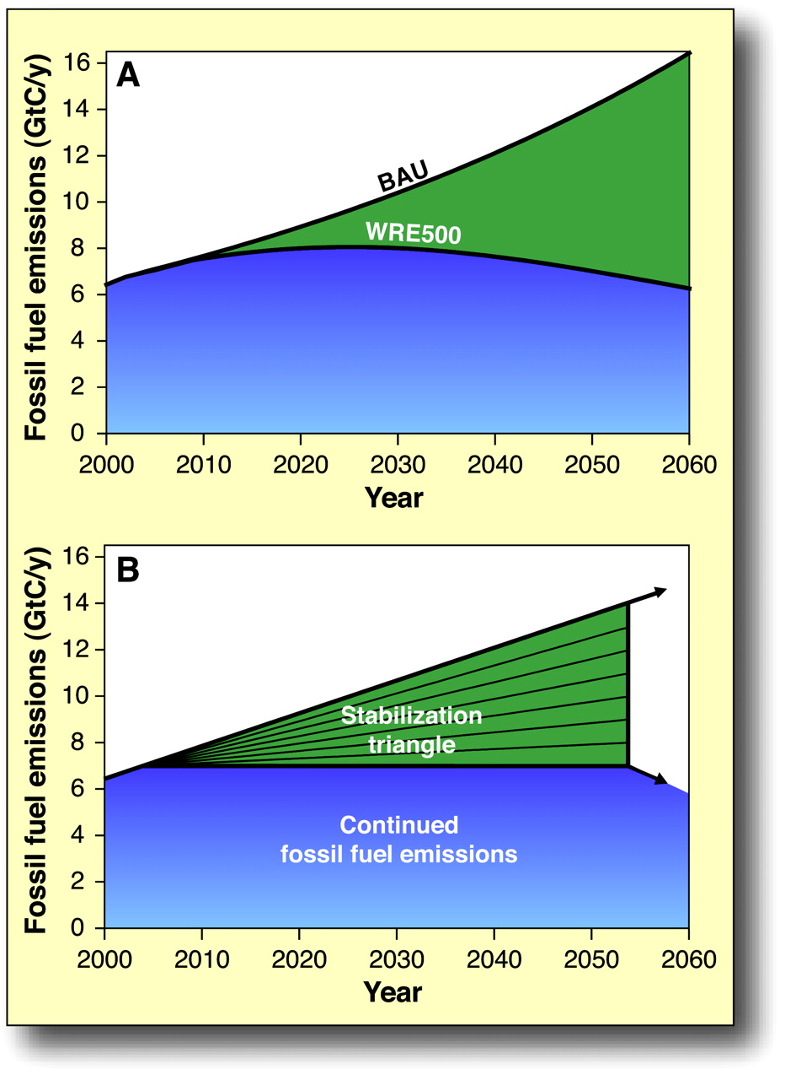
Source: Pacala and Socolow (2004)
The Mckinsey cost curve
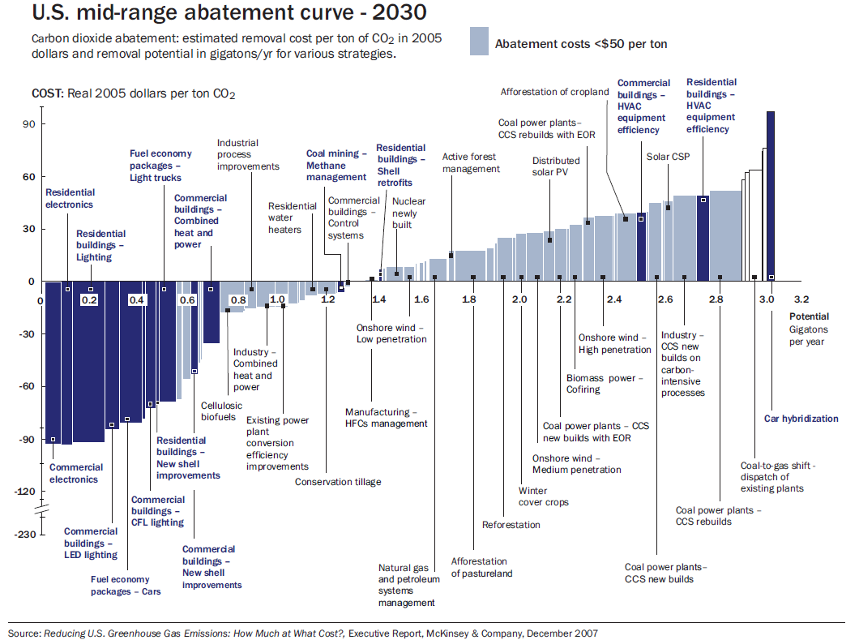
Source: Mckinsey, GHG Abatement Cost Curves
EPA social cost of carbon

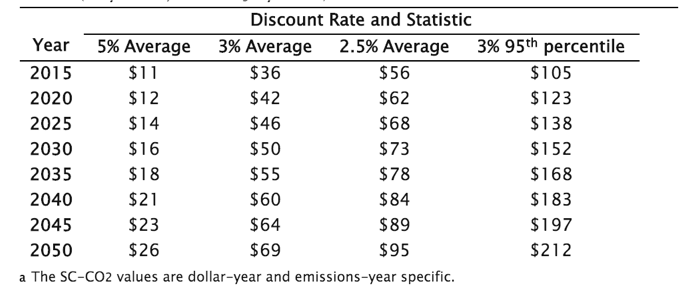
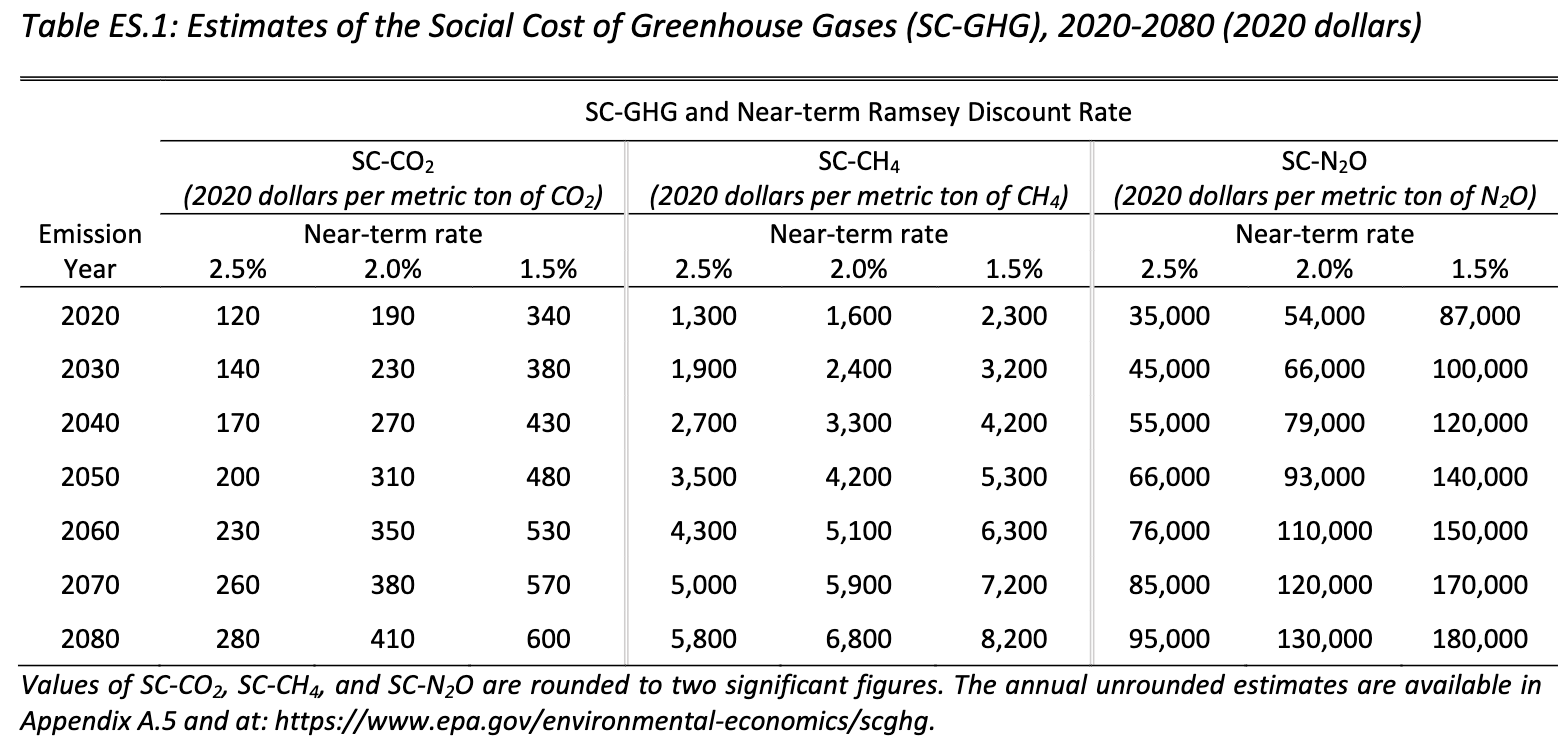
Source: EPA
NYDEC ‘Value of Carbon’ Guidance
- Carbon dioxide: $125 per ton
- Methane: $2,782 per ton
- Nitrous oxide: $44,727 per ton
Source: NYDEC
SCC updates

Tax vs Cap and Trade
Similarities:
- Achieve carbon emission reduction
- Abatement costs
- International competitiveness
- Raising revenue
- Social costs
- Distributional impacts
Differences:
- Transaction costs
- Performance under uncertainty
- Linkages
- Price volatility
- Interaction with complementary policies
- Market manipulation
- Administrative requirements
Source: Read more: Stavins (2022)
What works what’s not
- Carbon tax vs. subsides
- Regulations vs markets
- Considering
- Societal acceptance
- Political feasibility
- Societal acceptance
Source: Read more: Armitage, Bakhtian, and Jaffe (2023)
Best practices
- Energy efficiency
- Low carbon eco-city
- Renewable integration
- Sectoral experiences
- Policy/technology tools
Policy instruments
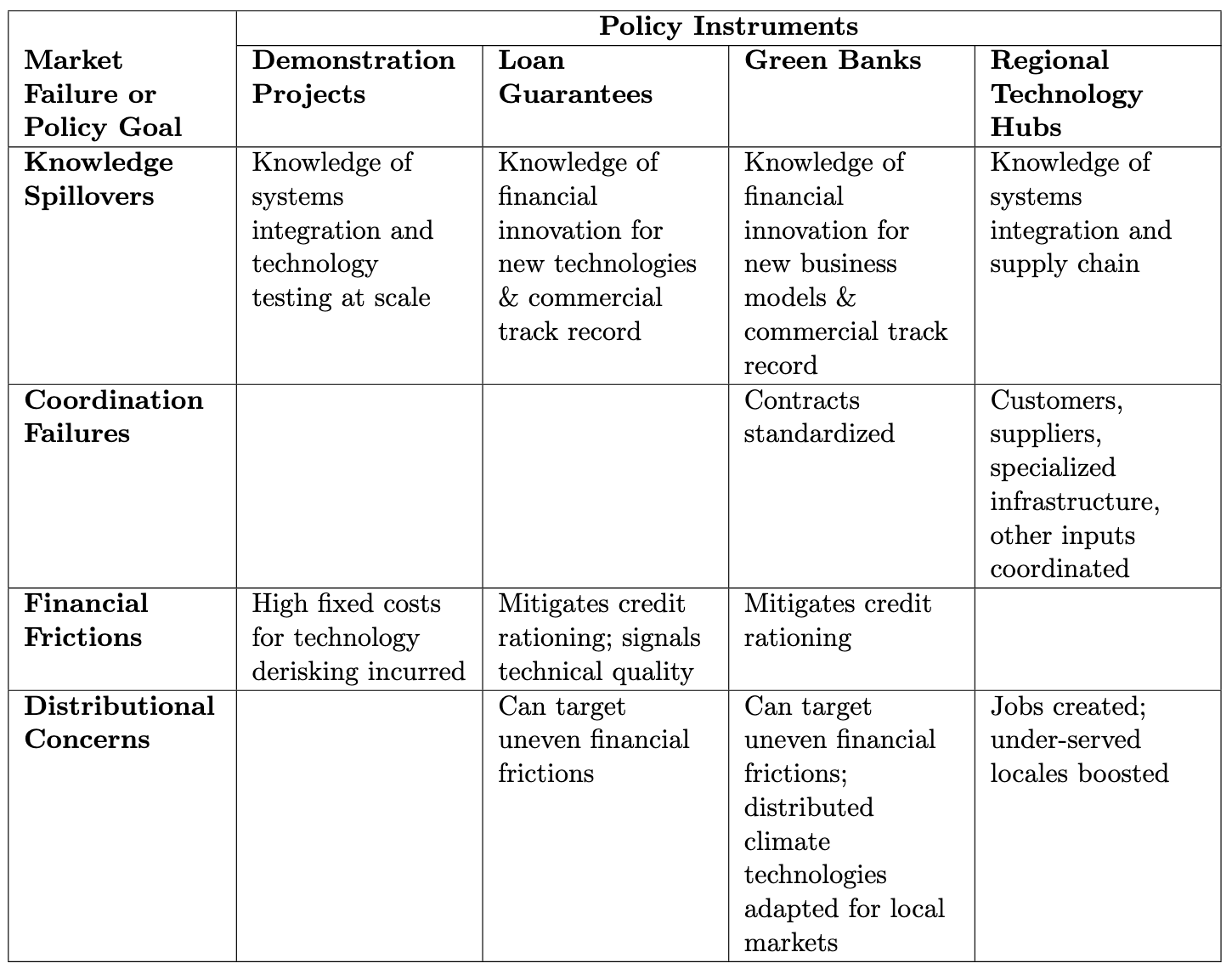
Source: Armitage, Bakhtian, and Jaffe (2023)
Type of instruments
- Regulations and Standards
- Taxes and Charges
- Tradable Permits
- Voluntary Agreements
- Subsidies and Incentives
- Inforamtion Instruments
- R&DD
- Non-Climate Policies (Cobenefits)
Source: Gupta (2007)
What policies work
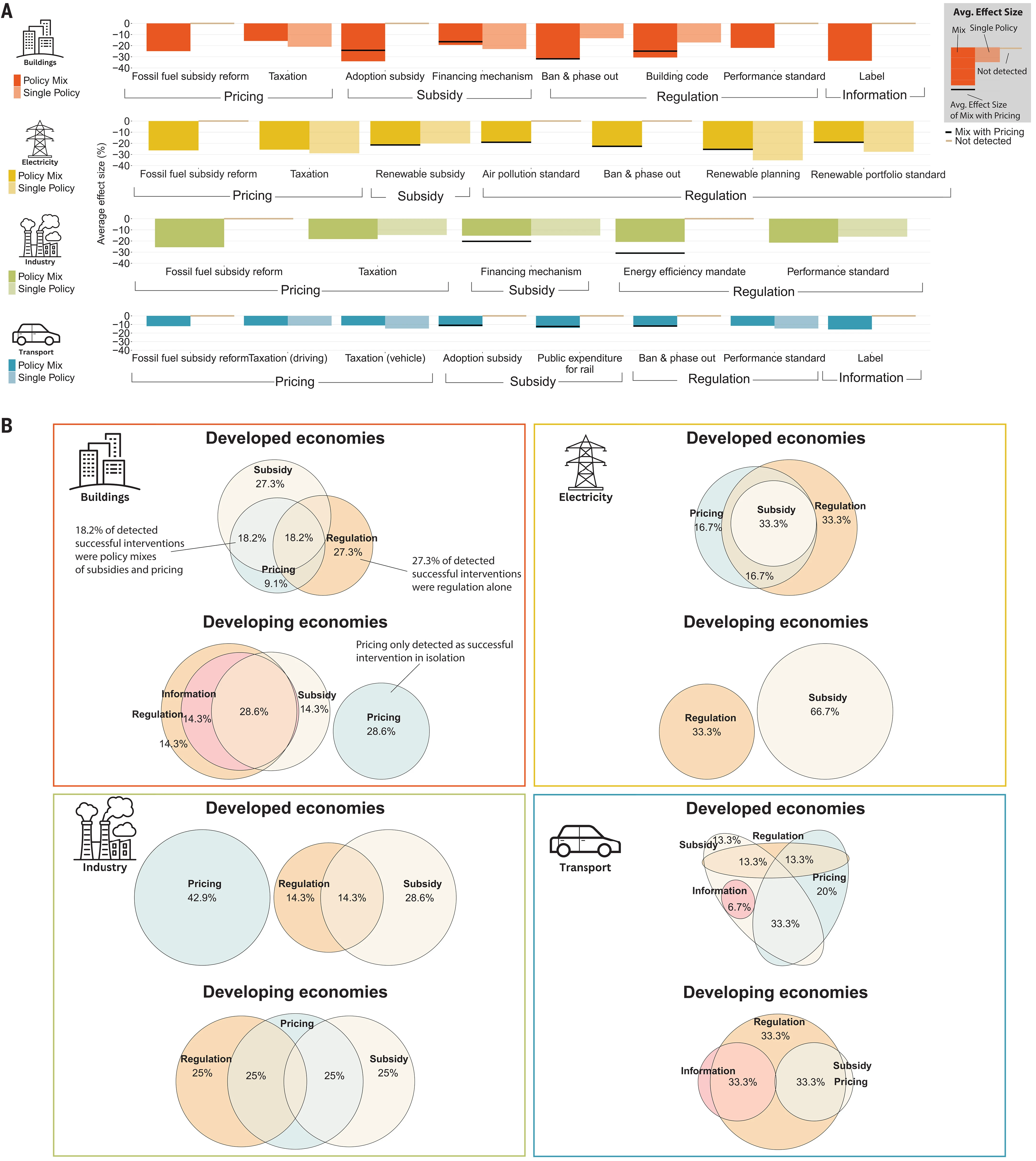
Source: Stechemesser et al. (2024)
Social cost of carbon